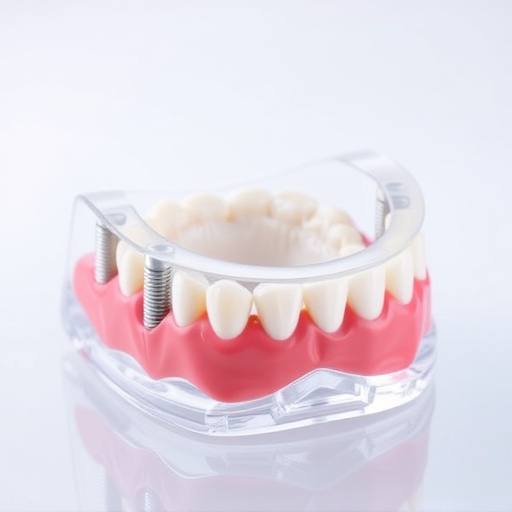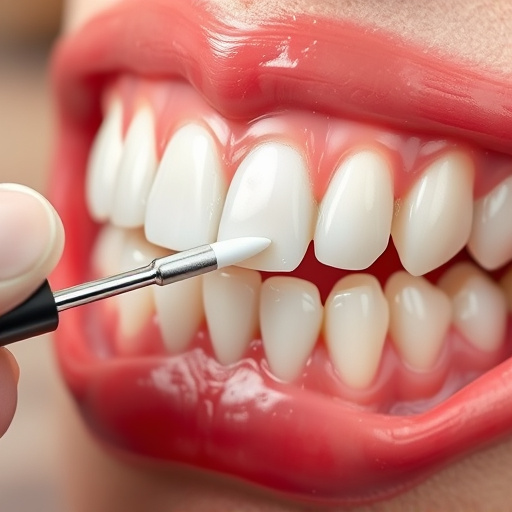Dental sealants for teeth are thin, durable resin or acrylic coatings that act as protective barriers on back teeth, preventing food and bacteria accumulation in hard-to-reach areas. Highly effective against cavities and costly extractions, they are ideal for children during permanent tooth eruption and adults looking to maintain oral health. Application involves cleaning, specific varnish, and light curing, with regular dental check-ups ensuring optimal protection. Sealants complement good oral hygiene practices, promoting healthier smiles and proactively protecting teeth from decay.
Dental sealants for teeth are an effective first step in cavity prevention, offering a protective coat that shields tooth surfaces from bacteria. This article delves into the world of dental sealants, exploring their role in preventing cavities and outlining the benefits and best practices for their application. By understanding how these protective coatings work, you’ll gain valuable insights into maintaining optimal oral health.
- Understanding Dental Sealants: A Protective Coat for Teeth
- How Do Dental Sealants Work in Preventing Cavities?
- Benefits and Best Practices for Applying Dental Sealants
Understanding Dental Sealants: A Protective Coat for Teeth

Dental sealants for teeth are a highly effective preventive dentistry solution that acts as a protective coat on the chewing surfaces of back teeth. These thin, durable coatings made from resin or acrylic are applied to areas where food particles and bacteria tend to accumulate, creating a barrier that prevents decay. By sealing these crevices, dental sealants significantly reduce the risk of cavities and tooth extractions, which can be both painful and costly.
This simple yet powerful procedure is especially beneficial for children, as their permanent teeth erupt and are more susceptible to early decay. However, adults too can benefit from cosmetic dentistry techniques like dental sealants as a proactive measure against oral health issues. Preventive dentistry focuses on maintaining healthy teeth and gums, and dental sealants play a crucial role in achieving this by providing a first line of defense against the common causes of tooth decay.
How Do Dental Sealants Work in Preventing Cavities?

Dental sealants for teeth are highly effective in preventing cavities by creating a protective barrier on the chewing surfaces of back teeth. They are typically applied to molars and premolars, areas prone to decay due to their complex anatomy and frequent exposure to food particles. The sealant, a thin, hard-wearing resin, bonds directly to the tooth enamel, sealing off pits and grooves where bacteria can accumulate and cause cavities. By blocking these entry points, dental sealants significantly reduce the risk of tooth decay, even in individuals with high dental vulnerability.
In conjunction with comprehensive dental care, regular brushing, flossing, and visits to the dentist, dental sealants offer a robust line of defense against cavities. They are particularly beneficial for children and adolescents, as they help establish good oral hygiene habits from an early age, preventing more extensive procedures like tooth extractions or, in severe cases, the need for dental crowns.
Benefits and Best Practices for Applying Dental Sealants

Dental sealants for teeth are a highly effective preventive measure that acts as a protective barrier against decay-causing bacteria. When applied correctly, these thin, durable coatings adhere to the chewing surfaces of back molars, where toothbrush bristles can’t reach, sealing out plaque and food debris. This simple yet powerful step in routine restorative dentistry significantly reduces the risk of cavities and, ultimately, costly and invasive procedures like tooth extractions.
Best practices for applying dental sealants ensure optimal protection. This includes thoroughly cleaning and drying the teeth before application, using a specific type of varnish designed to bond with enamel, and curing the sealant with precise light activation. Regular dental cleanings and check-ups are crucial to monitor the condition of sealants, ensuring they remain intact and effective. By integrating dental sealants into their oral hygiene routine, individuals can proactively protect their teeth from decay, promoting a healthier smile and avoiding procedures that could have been prevented.
Dental sealants for teeth represent a simple yet highly effective first step in cavity prevention. By applying a protective coat to the chewing surfaces of back teeth, sealants create a physical barrier against plaque and food debris. This preventive measure is particularly beneficial for children, as it can significantly reduce the risk of early tooth decay. Understanding how dental sealants work and following best practices for application ensures their longevity and maximal benefits, contributing to healthier oral habits from a young age.














